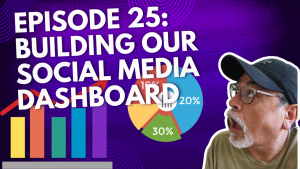Charismatic vision never scales on its own; sustained performance rests on purposeful followership. Organizational-psychology evidence now treats followers as cognitive partners who refine strategy, challenge assumptions, and model leadership habits that bind teams to shared outcomes. When executives embed effective followership in hiring practices, learning programs, and performance reviews, they unlock the discretionary effort that converts ideas into revenue. This article explains why and how, weaving theory and practice into a blueprint that any chief executive can put to work.

Why Followership Deserves Strategic Attention
Benson, Woodley, Jensen, and Hardy (2024) compared the “ideal leader” with the “ideal follower” across three studies. Followers won higher ratings for cooperation, dependability, and work ethic, while leaders dominated the ambition and confidence scales; trustworthiness bridged both roles. The authors concluded that many organizations screen for assertive charisma yet overlook the horizontal-morality traits that actually sustain execution.
Ignoring those horizontal traits carries a cost. Turnover climbs when diligent employees watch dissenters get silenced, and innovation stalls when risk signals never reach the corner office. Followership thus sits at the center of enterprise resilience, not at its periphery.
Five Behaviors That Amplify Enterprise Value
Proactive Issue Spotting
A 2025 systematic review in Current Psychology finds that anticipatory problem solving predicts team resilience more strongly when framed as effective followership than when framed as individual heroics. Employees who surface small hazards early prevent costly firefighting later.
Implementation in practice: Recruiters can deploy situational-judgment questions that evolve mid-interview, forcing candidates to notice subtle risk cues; learning teams can run quarterly premortem workshops that reward the fastest credible warning, not merely the loudest.
Constructive Dissent
Uhl-Bien and colleagues (2013) position “courageous conscience” as the heartbeat of collective sense-making. Followers who challenge leaders respectfully increase decision accuracy and reduce escalation of commitment.
Implementation in practice: Culture teams should track “challenge moments” the way they track safety incidents, logging who spoke up, what happened next, and how leadership responded. Publish summary dashboards so employees see that principled pushback earns recognition.
Goal-Aligned Advocacy
Xia, Shi, and Wang (2024) demonstrate that gain-framed messages from leaders boost employees’ voluntary advocacy, whereas loss-framed threats sap it.
Implementation in practice: Managers can rehearse positive framing before all-hands briefings, linking each metric to collective upside. Review templates should invite employees to catalogue instances where they championed organizational goals beyond their remit, cementing advocacy as a measurable habit.
Identity Fit With Followership Prototypes
Yu and Feng (2024) show that followers whose self-image matches positive followership prototypes; industrious, cooperative, civic-minded, display higher job performance through “taking charge” behavior.
Implementation in practice: Onboarding portals should articulate the company’s explicit followership model. Pulse surveys can then test for prototype alignment each quarter; low-fit scores signal coaching or role-reassignment needs.
Shared Sense-Making
The same Frontiers study highlights followers’ role in reframing ambiguous data for leaders. When employees see themselves as co-interpreters rather than passive recipients, time-to-decision falls and strategic pivots accelerate.
Implementation in practice: Rotate non-managers into weekly “sense-making huddles” with senior staff. Publish the synthesized insight alongside the executive decision so contributors witness their cognitive fingerprints on strategy.
Infusing Followership Into Talent Systems
Hiring: Beyond Charisma Screens
Most applicant-tracking algorithms prioritize resume keywords associated with leadership, yet words like “stabilized,” “supported,” or “monitored” often signal the quiet diligence central to effective followership. Replace generic behavioral prompts with questions such as, “Describe a time you spotted a small irregularity and stopped a project from derailing.” Calibrate scoring rubrics to reward vigilance, not bravado.
Psychometric instruments help, but only if they measure active engagement and critical thought rather than obedience. Pair them with work-sample tests, compressed simulations in which candidates must raise a red flag before receiving all the facts.
Learning and Development: Designing for Agency
Traditional leadership programs tell managers how to inspire; they rarely teach employees how to challenge. Micro-learning bursts; ten-minute interactive modules spaced across a quarter, build a common vocabulary for leadership habits on both sides of the hierarchy. Peer-coaching trios then discuss real examples of constructive dissent, reinforcing psychological safety through lived stories rather than slideware.
Performance Reviews: Measuring Followership Capital
Shift the annual conversation from “Did you hit your goals?” to “How did you amplify collective goals?” Managers should document the frequency and quality of risk flags, advocacy moments, and sense-making contributions. Over time, these data points form a followership score that influences compensation just as sales quotas do.

Turning Policy Into Reflex
Systems crumble when culture punishes truth-telling. Leaders must show, not tell, that dissent is safe. One Asia-Pacific telecom publishes a monthly “Course-Correction Chronicle” that names both the follower who raised a challenge and the executive who acted on it. Executives record short video responses thanking employees, modeling receptive humility, and embedding leadership habits across the power gradient. Anecdotal evidence shows subsequent challenge volumes rising month over month.
Measuring Impact Without Bullets
A mid-cap software firm that embedded these practices tracked three indicators over eighteen months. Strategy-execution hit rate climbed from 68 percent to 82 percent, employee voice climate scores rose from 3.4 to 4.1 on a five-point scale, and voluntary turnover fell from 14 percent to 9 percent. The firm attributes most of the lift to faster issue detection and richer cross-level dialogue. While correlation does not equal causation, the directional consistency across metrics strengthens the business case.
Obstacles and Mitigation
Skeptics argue that foregrounding followership dilutes accountability at the top. The evidence points elsewhere: followers with structured voice channels free leaders to focus on long-cycle decisions rather than transactional firefighting. Others fear that open dissent erodes unity; yet when dissent remains private, misguided projects persist longer. Finally, some worry about assessment overhead. Modern talent-analytics platforms can mine narrative feedback for dissent keywords, turning evaluation into a low-friction background process.
Followership is not the opposite of leadership; it is leadership’s multiplier. By elevating proactive issue spotting, constructive dissent, goal-aligned advocacy, identity fit, and shared sense-making, organizations turn vision into traction. Codifying those behaviors inside hiring models, adaptive learning journeys, and data-rich review cycles cements effective followership as institutional muscle memory. As executives refine these practices, they model leadership habits that echo through every layer of the firm, converting strategic intent into repeatable commercial gain.


































